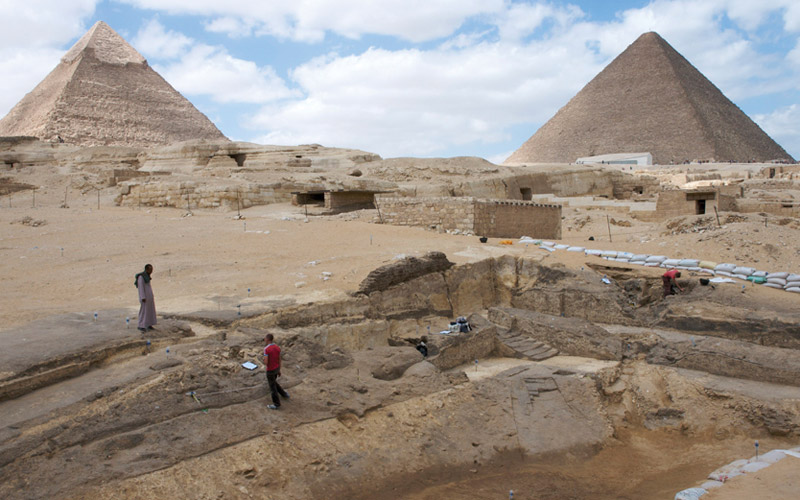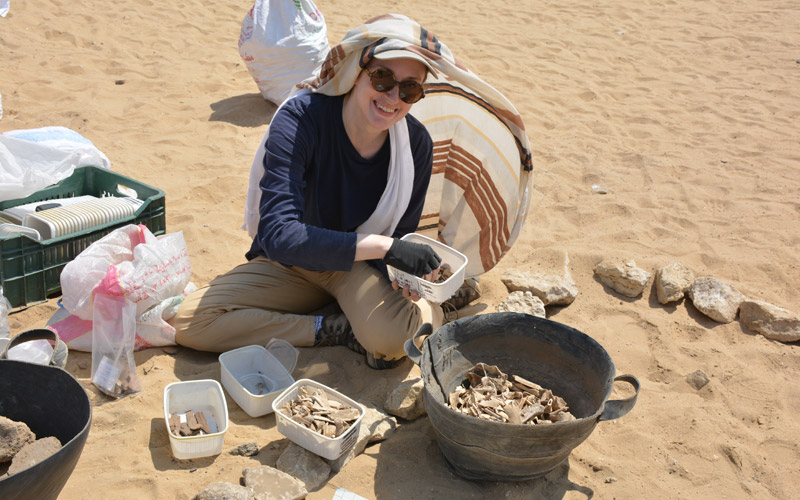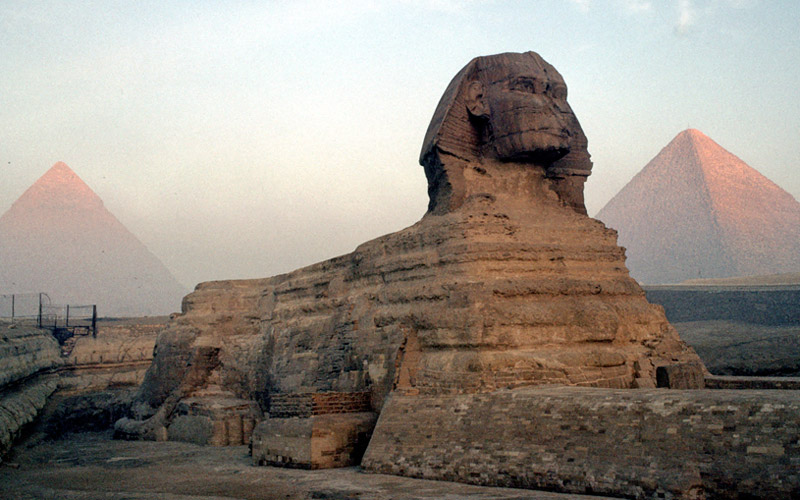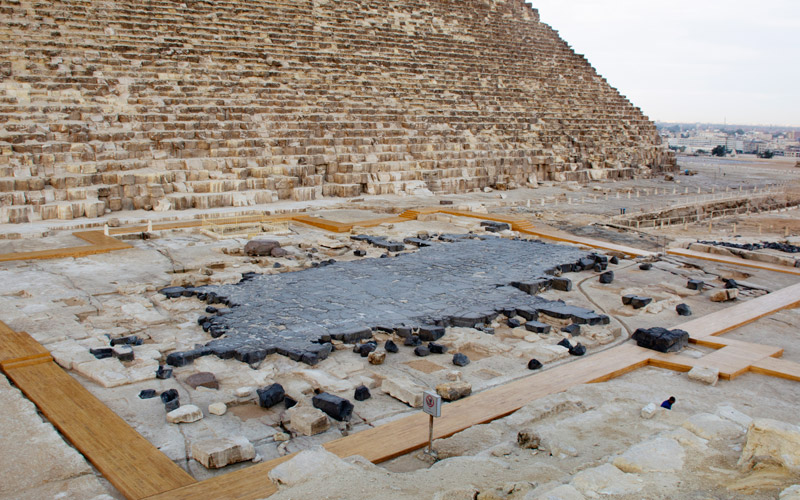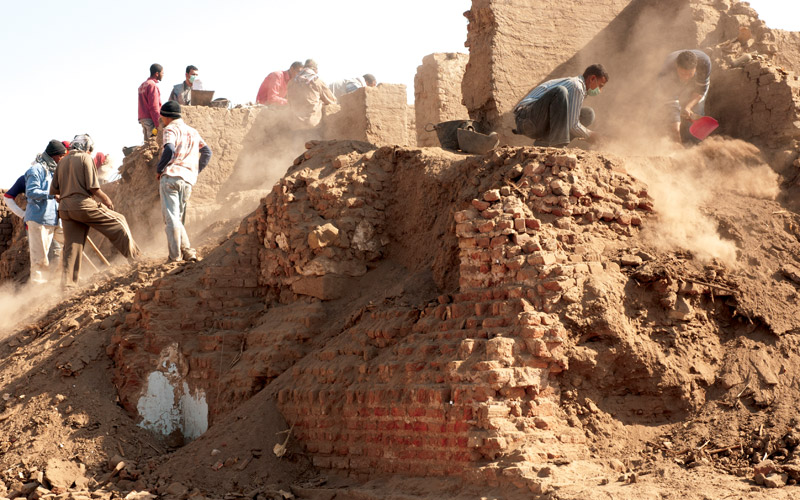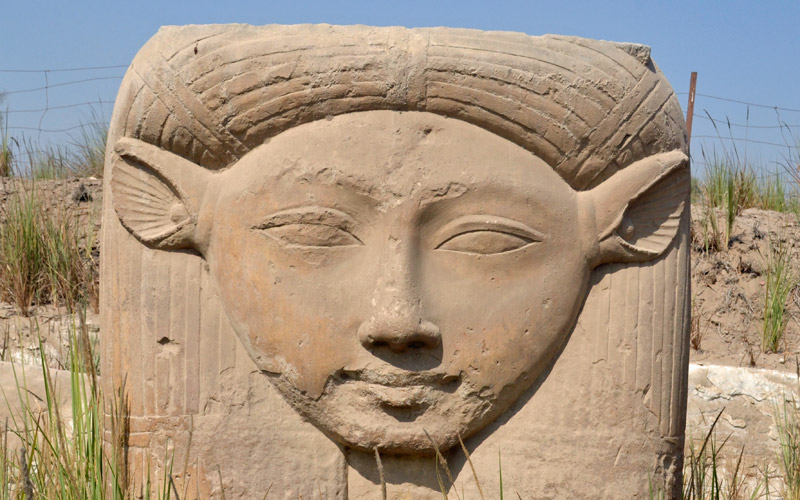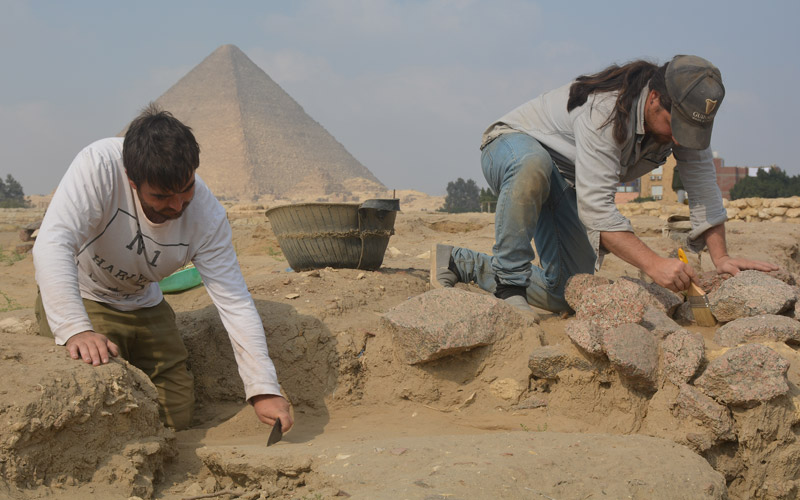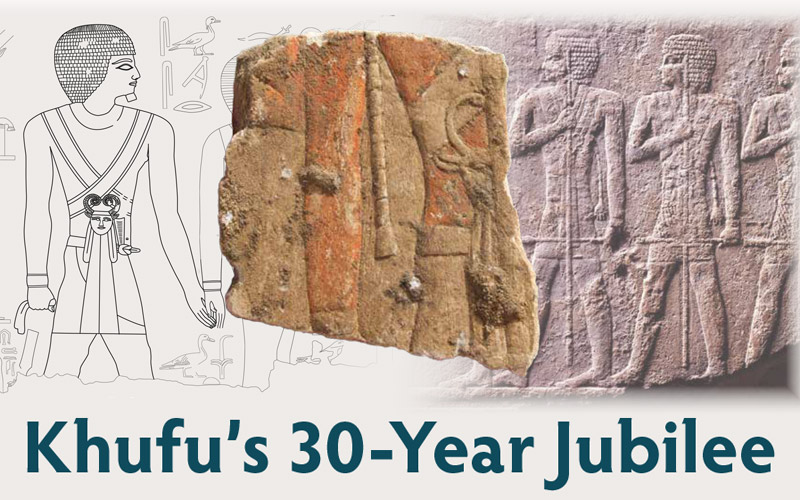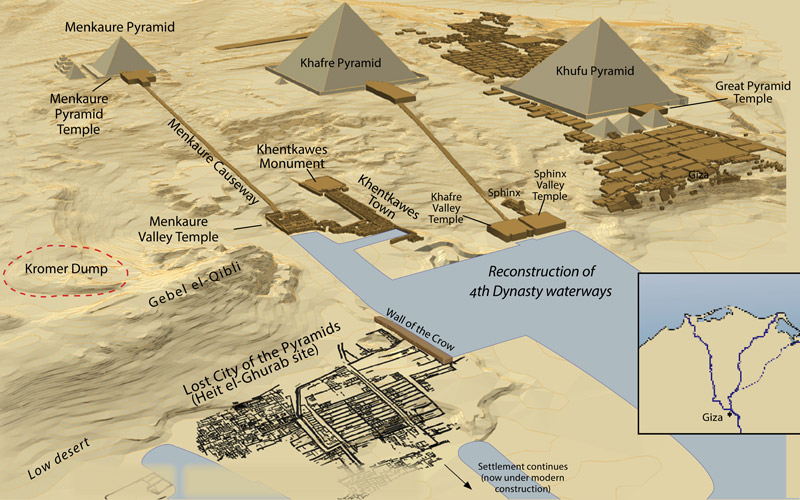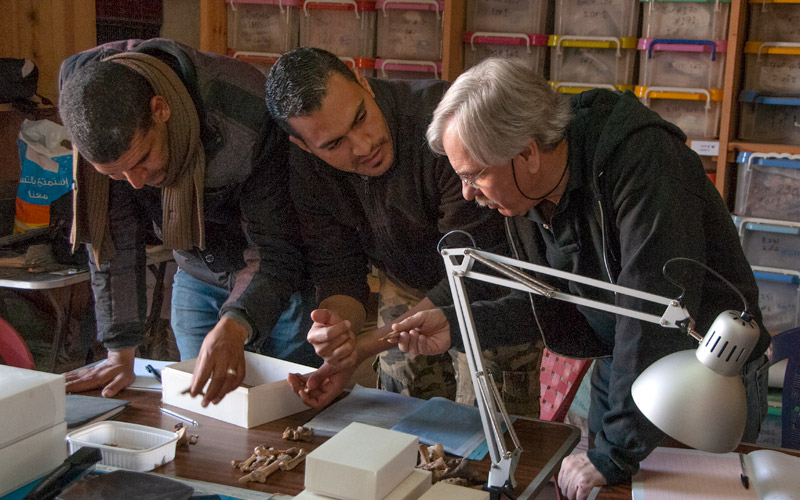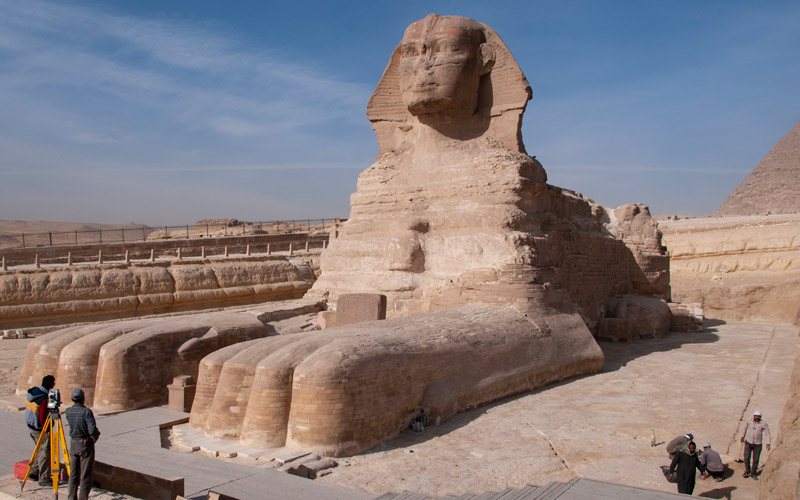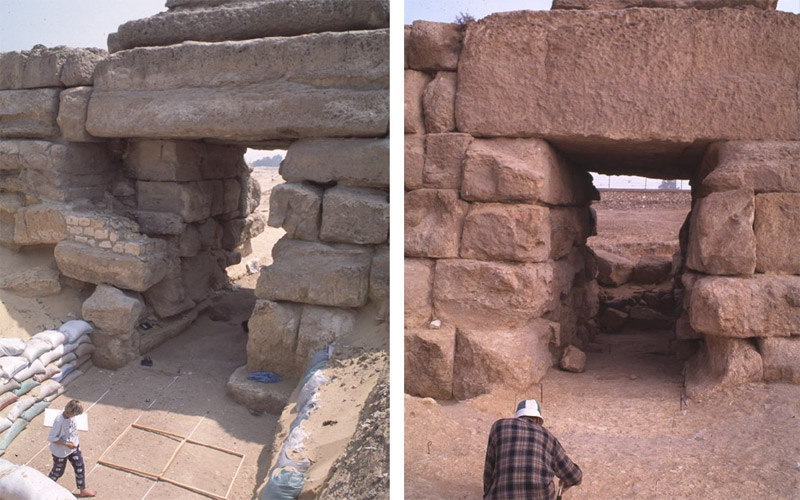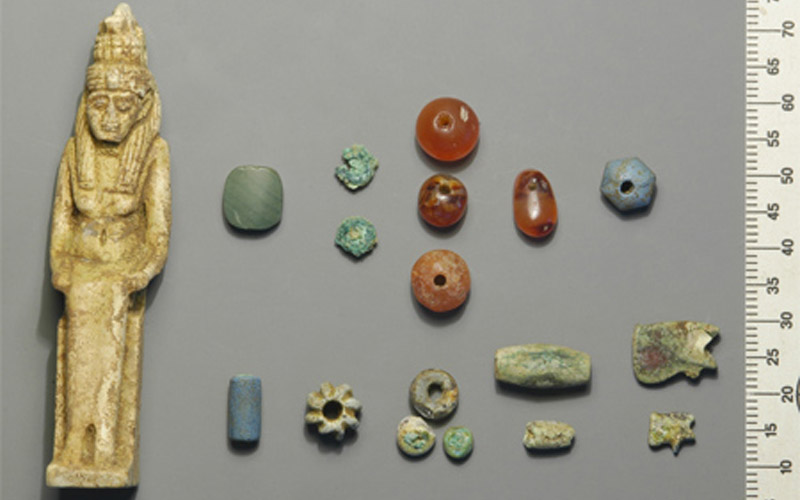Fieldwork
We’ve been excavating in Egypt for more than 30 years. Find out more about our past and present field work projects.
The Lost City of the Pyramids (Heit el-Ghurab)
In 1988, Mark Lehner and AERA discovered a site 400 meters south of the Sphinx that proved to be a vast settlement that once served as the base of operations for constructing the great pyramid complexes.
Its large population of laborers, craftsmen, and administrators worked toward the single goal of erecting the pharaoh’s eternal home. Our excavations here have provided a wealth of information about both the building of the pyramids at Giza and the development of the Egyptian state.
Khentkawes Town & the Menkaure Valley Temple
In the Menkaure Valley Temple (MVT), ancient priests carried out rituals to maintain the pharaoh Menkaure in the Afterlife. The temple was first excavated by George Reisner in 1908, but AERA’s recent work here has yielded many new discoveries and tantalizing clues of what may still remain to be uncovered.
Just to the north of the MVT stands the Khentkawes Town. This was home to the priests and administrators serving the cult of Queen Khentkawes I, who was buried in a monumental tomb at the west end of the town. Our work here has uncovered an eastern extension to the town, including a Nile port.
Kromer Dump Site
The Kromer Dump site, about 550 meters south of the Sphinx, was a 4th Dynasty municipal “landfill,” heaped with garbage hauled from two sites, including the Lost City settlement.
Luckily for us, this garbage dump was well preserved by its high and dry location and has provided us with material for significant discoveries, including hints that the earliest phase of the Lost City site was Khufu’s base for building The Great Pyramid complex.
Archaeological Survey
Mark Lehner and David Goodman launched the Giza Plateau Mapping Project in 1984 to create a high precision surveyed map of both the natural and cultural features of the entire Giza Plateau. We continue to use and build upon this data to this day.
In addition to survey, we now use ground penetrating radar, laser scanning, and drones to document the major monuments on the Giza plateau and other sites around Egypt.
The Great Sphinx of Giza
Before James Allen and Mark Lehner began work here in 1979, there were no scale drawings of the Sphinx. The project that they embarked on produced an invaluable archive of Sphinx material that is now freely available to the public online.
In 2018, Mark Lehner and Zahi Hawass returned to the Sphinx using traditional mapping, survey, and ground penetrating radar to document changes to the Sphinx and its environment since the original project. AERA team member Yukinori Kawae also caried out 3D recordings by drone, photogrammetry, and laser scanning to create a complete 3D image of the Sphinx.
Great Pyramid Temple
Starting in 2020, we began working with Zahi Hawass on the Great Pyramid Temple Project to fully document, conserve, and protect the remains of Khufu’s once grand pyramid temple.
Since the temple lies mostly in ruins now, we worked to make the site more comprehensible to visitors with new signage and a walkway that follows the outline of its original monumental walls.
In the process of conserving its remains, we learned much about how the Great Pyramid Temple was originally built and its intended purpose.
Area C (Petrie's Worker's Barracks)
Sir Flinders Petrie called this series of long stone-walled galleries just west of the Khafre pyramid “worker’s barracks” when he was exploring the Giza plateau in the 19th century. AERA began working in this area in 1988 to test his theory.
Avenue of the Sphinxes and Luxor Town Mound
Luxor was the capital of Egypt during much of the Middle and New Kingdoms and a major religious center in ancient Egypt.
We spent two field seasons in Luxor running Salvage Archaeology Field Schools at two ancient sites that were soon to undergo major development: the Avenue of the Sphinxes (between the Luxor and Karnak Temples) and the Old Luxor town mound.
Memphis
Memphis was Egypt’s first capital city, and its history spans over 3,000 years.
We first went to Memphis in 2011, to run a Beginners Field School and excavate a section of a residential district and cemetery. In 2014 we returned with our Advanced Field School students to analyze the materials from that excavation.
We returned one last time for a two-year 50-student project to conserve and document many of the area’s major monuments and produce a museum catalog.
Selected Articles
Lost City of the Pyramids: 2022 Spring Field Season Update
We thought we knew what we were going to find when we began excavating a new part of the Standing Wall Island building in The Lost City of the Pyramids, but instead we found something unexpected that has made us start to rethink how this massive building was used.
Great Pyramid Temple Project: Newly Discovered Pieces of a Puzzle
While conserving the remnants of Khufu’s once grand pyramid temple, we uncovered fragments of the temple’s inner walls. These newly discovered fragments were decorated with relief-carved and painted scenes of the king’s 30-year jubilee.
Findings from the Menkaure Valley Temple (MVT)
During our 2019 Field Season, we returned to the MVT, an area crucial to our understanding of the overall settlement of the Giza Plateau. This area was previously excavated over 100 years ago, but we discovered many intriguing new things including that the famous Menkaure dyad statue was not actually discovered where we thought!
AERA in the News
Recent articles and videos about AERA’s work include Journeys of the Pyramid Builders, the cover story of the July/August 2022 issue of Archaeology magazine, and A Refreshing Look at Egypt’s Ancient Pyramids, a New York Times article.
Field School: Learning Bone
We feel that the best way to train students is through a hands-on approach to our current research topics.
Here two of our archaeozoology students share their first-hand experiences studying ancient animal bones.
How Old Are the Pyramids?
Find out how we used modern scientific methods to test the accepted historical dates of several Old Kingdom monuments, including the pyramids at Giza.
The Wall of the Crow
This massive stone wall stands only a few hundred yards south of the Sphinx, but because it lay partially buried it went mostly unnoticed—until we discovered it was literally the gateway to the Lost City of the Pyramids.
A Girl and Her Goddess
More than 2,500 years ago, a very ill young woman died and was buried at the already long-abandoned site of the Lost City of the Pyramids. Her grave goods included an amulet of an obscure goddess that suggests the woman may not have been from the Giza area and in fact, she may not have even been of Egyptian descent.


